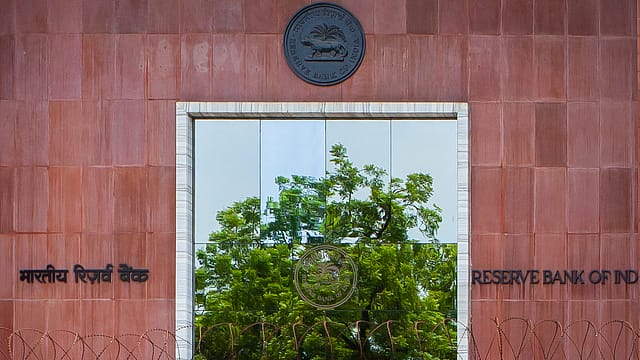RBI pushes climate risk to the forefront amidst wavering global momentum
ADVERTISEMENT

In a country as vulnerable to the impacts of climate change as India, with erratic monsoons, scorching heatwaves, and coastal flooding, climate consciousness in the financial sector is not only prudent but essential. Banks serve as the primary channels of credit flow, and if they fail to integrate climate risk into lending and capital allocation, the broader economy becomes exposed. Recognising this, the Reserve Bank of India has taken a decisive step by mandating climate-related stress testing and portfolio-level disclosures, embedding climate resilience into the financial system.
At a time when the global ESG agenda is encountering scepticism, RBI’s action signals quiet but determined leadership. In the US, ESG investing has become politically polarising, prompting fund withdrawals and regulatory resistance in several states. Europe, while grappling with energy security concerns following the Russia-Ukraine war, has temporarily increased its fossil fuel usage but continues to maintain its long-term commitments to net-zero goals. India, by contrast, is moving steadily forward. SEBI has already mandated BRSR disclosures for the top 1,000 listed companies with assurance mandates underway. A national taxonomy to define sustainable activities is under consultation, and now RBI has stepped in to bring climate risk into the core of financial regulation. These reforms, though technical in nature, reflect a strong alignment with India’s commitments under the Paris Agreement, even as the country balances development needs and energy demand.
The RBI’s framework, which begins phasing in from FY2025–26, applies to scheduled commercial banks, urban cooperative banks, and select NBFCs. These institutions must disclose how climate risks are embedded in their governance, strategy, and risk management. Over time, the scope will expand to include sectoral exposures, financed emissions, and mitigation targets. This aligns with international standards, such as the Task Force on Climate-related Financial Disclosures (TCFD) and the IFRS Sustainability Disclosure Standards, helping Indian institutions maintain their global credibility.
December 2025
The annual Fortune 500 India list, the definitive compendium of corporate performance, is out. This year, the cumulative revenue of the Fortune 500 India companies has breached $2 trillion for the first time. Plus, find out which are the Best B-schools in India.
One of the most transformative parts of the mandate is the requirement for climate stress testing. From FY2028, regulated entities will be required to simulate the financial impacts of severe climate scenarios, such as persistent droughts, flooding, or abrupt decarbonisation policies, on their credit portfolios. This will push banks to incorporate long-term physical and transition risks into capital adequacy planning and risk-weighted assets, rather than treating climate impacts as one-off or external to the balance sheet.
Importantly, this is not limited to large corporate lenders. Retail-oriented banks will also be expected to assess climate risk in their housing, MSME, and agricultural lending portfolios. A bank with home loan exposure in flood-prone coastal cities, or with MSME borrowers dependent on climate-sensitive sectors like textiles or food processing, must now model future asset impairment or rising default risks. Similarly, rain-fed agricultural lending may face heightened vulnerability to monsoon failures. To support this shift, the RBI is developing a centralised Climate Risk and Sustainable Finance Data Repository (RBI-CRIS), which will house standardised and sector-relevant climate data to aid institutions in building robust internal risk models. Banks have already started taking action, tying up with consulting firms, accessing data sets for risk modelling, and involving both risk and ESG teams for the activities.
The rationale is clear. India is among the most climate-exposed countries globally, and climate-related losses in sectors like agriculture, real estate, and infrastructure are already materialising. What were once deemed exceptional events, flash floods, extreme heat, unseasonal rainfall etc., must now be treated as structural risks. Embedding these factors into credit evaluation and provisioning frameworks will make the system more resilient.
This shift also has implications beyond the banking sector. With financial institutions disclosing their exposures to carbon-intensive industries, companies in fossil fuels, real estate, and transport may find capital harder or more expensive to access unless they actively pursue greener transitions. Conversely, firms investing in low-carbon technologies, energy efficiency, and circular economy models could benefit from better financing terms. Aided by India’s developing Taxonomy, over time, a “greenium” for sustainable firms and a “brown discount” for laggards may begin to shape credit and equity markets. If not a “greenium,” increased access to capital will certainly be an added advantage for climate conscious companies. It remains to be seen whether India’s capital markets will follow suit. While the RBI has placed the onus on banks and NBFCs, institutional investors like mutual funds, insurers, and pension funds may at some point be expected to evaluate and disclose their own climate risks.
Execution, of course, will be complex. Large banks may already be building climate risk frameworks, but regional banks, cooperative lenders, and smaller NBFCs may lack the capacity or resources. RBI will need to support implementation through phased compliance, simplified templates, and targeted capacity-building initiatives to ensure no institution is left behind.
Globally, India’s regulatory architecture is now on par with leading jurisdictions. The European Central Bank has mandated climate disclosures and begun imposing fines for non-compliance. The UK has integrated TCFD-aligned reporting across sectors. Japan and China are piloting green finance frameworks and stress testing. The United States, however, remains divided while federal agencies like the SEC and Fed have signalled interest in climate risk, political resistance has slowed national coordination. India, though quieter, is emerging as a regional frontrunner with concrete mandates and timelines.
Ultimately, this is not regulatory overreach, it is risk-informed stewardship. Climate risk is no longer hypothetical. It is material, measurable, and already affecting asset quality and macroeconomic stability. By embedding climate awareness into the very structure of banking and finance, the RBI is ensuring that India’s growth story is not just fast, but also future-ready.
The author is an ESG analyst at SBI Mutual Fund.
